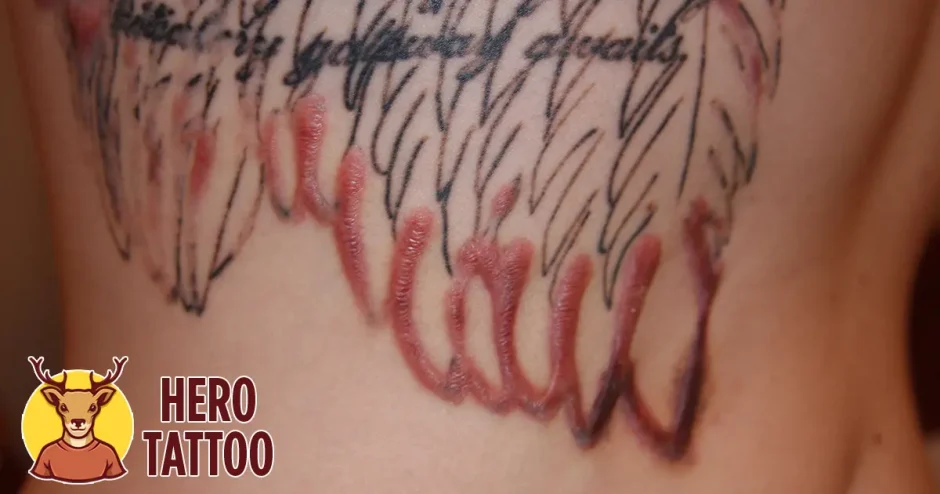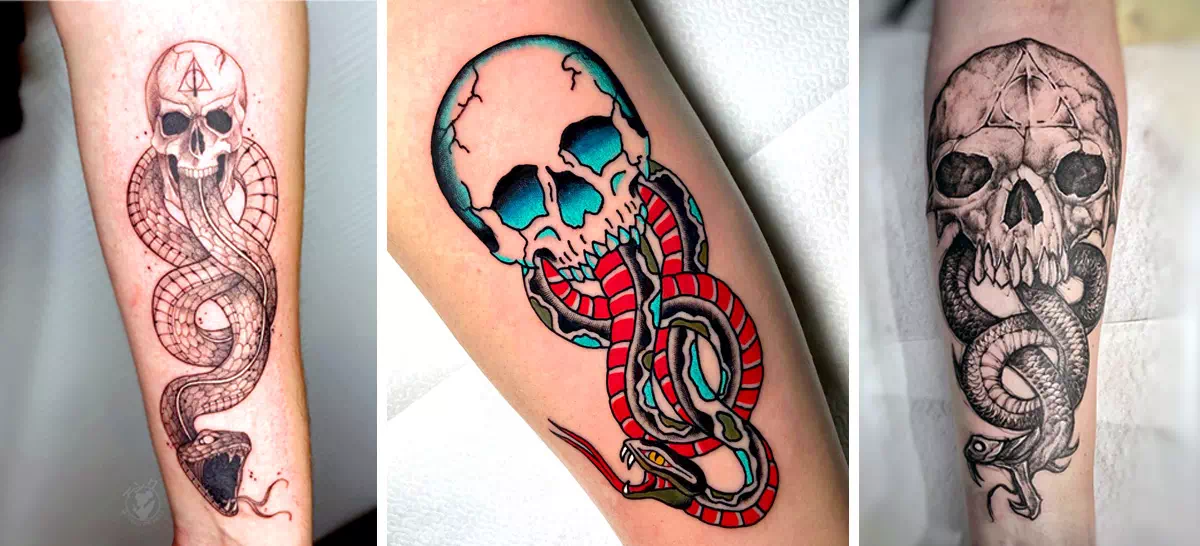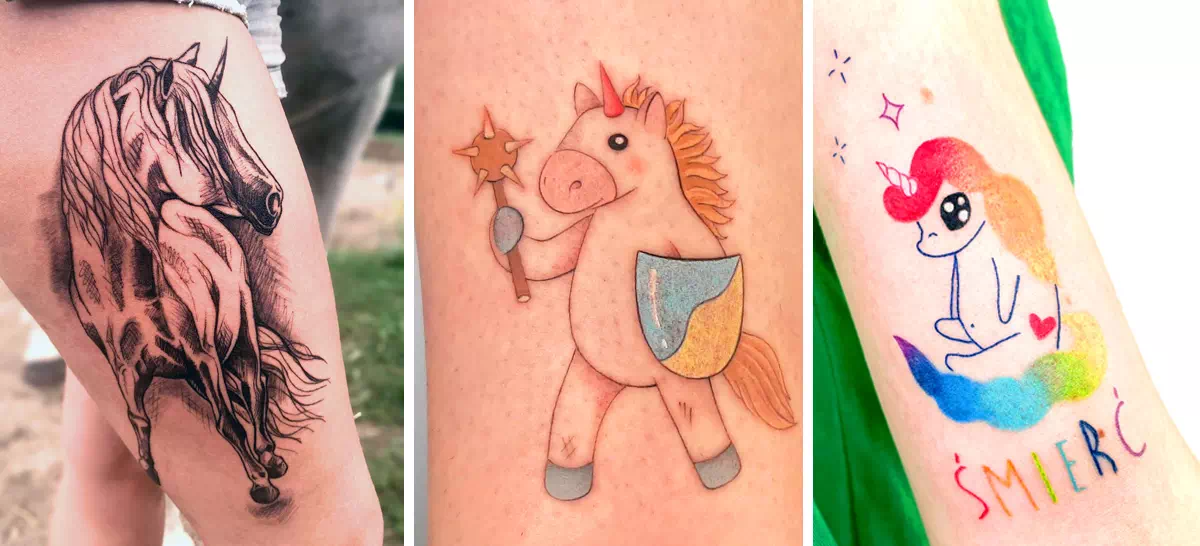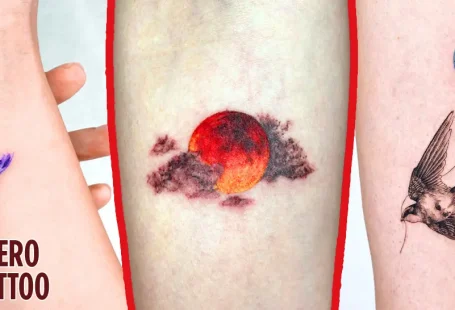Each person who gets a new tattoo exclaims how fantastic it is. However, when asked about the only disadvantages of having a tattoo, most people list difficulties such as the discomfort experienced during the tattooing procedure. On the other hand, everyone forgets to discuss the journey that begins after you leave the tattoo parlor with your new tattoo.
The aftercare regimen you must follow until your tattoo may make or break your experience with the tattoo. If you make one mistake, you risk losing your entire tattoo. Unfortunately, you’ve likely had lousy luck if you’re reading this. Your tattoo isn’t healing correctly; it’s all elevated and potentially puffy or itchy. Am I right?
We’re here to help you with any problems you might be having with your tattoo aftercare, so don’t be concerned about anything. Raised tattoos can be caused by various factors, which we will cover in further detail in the following sections. So let’s get this party started!
Your Tattoo Is Raised? What Could Be the Cause and What Should You Do?

The Formation of Scabs and Crust
As you may be aware, having a tattoo results in creating an open wound on the skin. Thousands of needles are stabbed into your skin throughout the tattooing process, causing your body to react as if it were experiencing a genuine injury. The immune system works hard to repair the “wound” as quickly as possible, which in this situation may take many days or even weeks.
As a result, your tattoo does not seem elevated during the first few days after getting it. The tattooing procedure has left the body with an excess of ink, blood, and plasma, which are currently being eliminated by the body. After the leaking has stopped and the area has been cleaned and allowed to dry, your tattoo will begin to create a new skin layer.
Consequently, you will notice that your tattoo seems elevated and that a crust or scab is growing on it. In addition, the appearance of additional symptoms such as itching and the falling off of scabs indicates that the procedure is entirely natural.
- What Should I Do?
In this situation, patience will prove to be your most valuable asset. The creation of scabs and the subsequent fall off of those scabs is a game of patience in which there is nothing you can do. To be honest with you, there are a few things you can and cannot do. In the case of scabs, you should avoid touching or peeling them off because doing so can prolong the healing process and increase the risk of infection.
- You can rehydrate the skin and ease itching by applying a thin layer of light, emollient, fragrance-free ointment or lotion to the affected area.
- You mustn’t scratch the tattoo at any cost.
Possible Tattoo Infection
Imagine that the tattoo healing process is accompanied by swelling, redness, and discomfort in the tattooed area or areas. In that instance, there is a reasonable risk that your tattoo has developed indications of infection. This indicates that your tattoo should be examined and treated by a medical professional as soon as possible.
Infections are very prone to occurring for a variety of reasons, all of which are listed here. It’s possible that the tattoo artist didn’t properly disinfect their workspace or supplies. It’s possible that the tattoo ink got contaminated (which is sadly relatively common) or that you just handled the tattoo with filthy hands and transferred bacteria to it.
Abscesses, tissue necrosis, septic shock, toxic shock syndrome, cellulitis, and other tattoo infections are all quite common.
- What Should I Do?
It doesn’t matter what caused the infection; it will become elevated, bloated, scorching red, and extremely painful when a tattoo becomes infected. In such a situation, seeking medical treatment is the most prudent course of action. Antibiotics and other appropriate medications will be provided to you. Because of the infection, your tattoo may appear a little worn after being dealt with properly.
You may experience a fever, chills, or sweats while your tattoo is healing. You should seek medical attention at the nearest emergency room or A & E department as soon as possible!
Tattoo Allergic Reaction
In the same way that a tattoo infection may emerge immediately after getting a tattoo, an allergic response to a tattoo might occur many days later. Almost every person who has had an allergic reaction to tattoo ink or latex gloves was unaware that they were allergic to the ink or latex gloves used by their tattooist.Both of these factors are among the most prevalent causes of allergic reactions.
This is because tattoo ink can either be polluted or include elements (such as metals and plastic) that might cause skin irritation or a flare-up of the skin. In addition, latex gloves, or latex in general, can induce allergic reactions in certain people, resulting in skin edema, irritation, and flare-ups, among other symptoms.
- What Should I Do?
It is essential to check that your tattoo artist uses high-quality ink before the actual tattooing process. Then, request that the tattooist use nitrile gloves rather than latex gloves, or inquire about which gloves they are already using and request a change if necessary.
If you are experiencing an allergic reaction, you can take the following steps:
- If the response does not decrease after several hours, try again the next day.
- If you want to keep the response from worsening, you might use antihistamines or steroid ointment on the affected area.
- If the tattoo continues to rise and expand and becomes painful and blistering, you must seek immediate medical assistance. In addition, some response signs, such as vomiting and fever, necessitate rapid medical intervention.
There isn’t much you can do without first getting a comprehensive medical assessment and treatment. Talk to your tattoo artist about whether they may have worn latex gloves or whether the ink they used may have been contaminated with bacteria.
Skin Condition That Might Exist (But Hasn’t Been Detected)
Many people aren’t aware that they have a skin issue until their skin is subjected to some form of external “aggressor,” which would be a tattoo, and then they become aware of it. Not all skin problems are apparent on the surface of the skin.
There are some skin problems, such as eczema or dermatitis, that you’re definitely familiar with. On the other hand, some skin disorders only flare up when they are inflamed by the needle prodding, the ink, or the entire healing process.
It is recommended that you have your skin examined by a dermatologist before getting a tattoo. The doctor will look at your skin extensively to see whether it is vulnerable to any disorders. Some dermatologists go so far as to investigate the potential for developing skin cancer. If a tattoo conceals the signs of cancer on the skin, it is beneficial to be aware of this information.
- What Should I Do?
The most important thing you can do is consult with a medical practitioner to determine whether or not you are dealing with a skin problem.
Then you may retrace your steps through the tattooing procedure, trying to recall whatever type of gloves your tattooist was wearing. If they wore latex gloves, there’s a reasonable probability you’re dealing with an allergic reaction, which will cause your skin to respond and raise.
Aside from that, there isn’t much you can do to help. Simply speaking with a specialist and following their treatment suggestions and instructions should be enough.
Possible Tattoo Blowout
During tattooing, a tattoo artist will insert the needle into the dermis, a specific skin layer targeted for tattooing. The hand will create a vacuum in which the ink will be able to sit. Some untrained or heavy-handed tattooists, on the other hand, dig deeper into the skin, penetrating through the dermal layer.
A result of this is that the tattoo ink begins to bleed and extend beyond its original contours, resulting in the tattoo rising and the possibility of healing complications. This procedure is referred to as a “tattoo blowout.”
The tattoo may cause skin scarring due to the tattooist’s entering the skin too deeply in some situations. This causes the skin to become elevated and to remain elevated, particularly in the case of keloid-type scars.
- What Should I Do?
A blowout will prevent you from being able to do anything until your tattoo has completely healed. Laser correction, total laser tattoo removal, or tattoo cover-up are all options for treating the blowout.
In the case of scarring, there isn’t much you can do to prevent it from occurring. Some people employ temporary remedies, such as cosmetics or moisturizing creams, to rejuvenate their skin. At the same time, they wait for the skin to regenerate. Nevertheless, it is all you can do to not accept and wear your tattoo scar with pride. After all, isn’t a scar a type of tattoo in and of itself?
What Are Some Other Factors That Could Influence Your Tattoo Raised?
- Normal biological reaction: there isn’t anything wrong with the tattoo; it’s just how the body deals with a foreign body, which causes it to rise and fall a tiny amount at specific points throughout time. For example, consider the following scenario: your tattoo has remained raised without any infection or adverse reaction signs. Even in such a scenario, you should consult with a medical practitioner and have your tattoo evaluated.
- As the weather changes, your tattoo may stretch and swell somewhat due to the increased humidity in the summer months. If your tattoo is exposed to the sun, put a layer of high-SPF sunscreen on it to avoid this happening. While the tattoo may not be damaged by the winter weather, it may be affected by the cold, which can cause drying of the skin, rashing, itching, and rising. Make sure to use moisturizers and keep the tattooed skin well hydrated (through lotions and regular water intake).
- Going through an MRI: Because ink tends to include metals, it has a tendency to respond to magnetic fields while passing through an MRI machine. Due to the attraction of the metals towards the machine, the tattoo is raised, swollen, and burned. Unfortunately, there is little you can do in this situation except seek medical assistance and explain that you have had an MRI and that the tattoo has been damaged.
Finally, remark that
Having a raised tattoo is very common, yet you’d be amazed at how many people, even those who have had tattoos for years, still suffer from tattoo lifting and swelling occasionally. Because the ink will always be a foreign item in your body, it will respond to internal and external changes.
The rising of a tattoo should not cause any discomfort or agony. However, it should be treated as a medical emergency if it does. Just make sure to take good care of your tattoo by keeping it clean, moisturizing it, and protecting it from the sun. In any other scenario, make sure to get medical assistance as soon as possible.
It is better to give than to receive!






